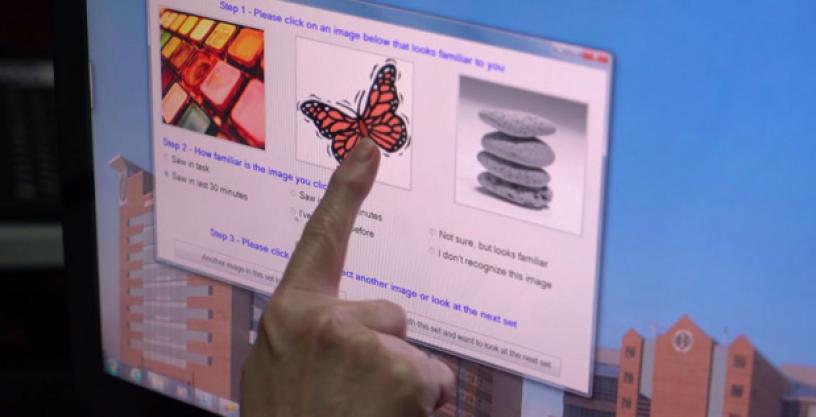
Researchers used patterned stimulation derived from patients’ own neural activity to facilitate encoding of episodic memories
Mar 28, 2018
DARPA launched the Restoring Active Memory (RAM) program in November 2013 with the goal of developing a fully implantable, closed-loop neural interface capable of restoring normal memory function to military personnel suffering from the effects of brain injury or illness. Just over four years later, the program is returning remarkable results. Today, RAM researchers at Wake Forest Baptist Medical Center and the University of Southern California published in the Journal of Neural Engineering that they have demonstrated the first successful implementation in humans of a proof-of-concept system for restoring memory function by facilitating memory encoding using the patient’s own neural codes. Volunteers in the study demonstrated up to 37 percent improvement in short-term, working memory over baseline levels.
“DARPA’s cumulative investments in neurotechnology over the past two decades have brought us to an extremely exciting point today where we’re testing tangible technologies that have the potential to alleviate some of the worst effects of brain injury and illness,” said Justin Sanchez, the director of DARPA’s Biological Technologies Office and the program manager for RAM.
RAM researchers focused on episodic memory, which includes information a person need only remember for brief periods, such as where a car is parked, what was served for dinner on a previous evening, or when he or she last took medication. Episodic memory loss is the most common type of memory loss in people with brain injury or Alzheimer’s disease.
To improve episodic memory, the RAM team limited its study to the hippocampus, a region of the brain that is central to memory formation. The hippocampus includes sub-regions called CA3 and CA1 that function together to support memory encoding and retrieval. When the brain registers new information to be encoded as a memory, neurons in the CA3 region fire, marking the input of information into the hippocampus, which triggers a subsequent sequence of neural activity in the CA1 region, marking the output from the hippocampus.
Working with neurosurgical patient volunteers who were being treated for epilepsy—a condition that often causes memory loss—the RAM researchers used surgically implanted electrodes to record neuronal activity in the volunteers’ CA3 and CA1 regions as the volunteers performed a visual memory test. The study participants were shown a simple image such as a color block and then, after a brief delay during which the screen was blank, were asked to identify the initial image out of four or five others shown on the screen.
By analyzing the recordings associated with correct responses, the researchers were able to construct what’s known as a multi-input multi-output (MIMO) nonlinear, mathematical, spatiotemporal model that predicted the transformation of neuronal firing patterns in the CA3 region into neuronal firing patterns in the CA1 region during successful memory formation. The “codes” that the model produced did not directly reference specific memories, but instead correlated to the CA1 firing patterns that occur when CA3 encodes information properly, thus correcting for any naturally occurring errors in transformation between CA3 and CA1 firing. When during subsequent image-recall tests the researchers used patterned, spatiotemporal electrical stimulation of CA1 to play back MIMO-based codes—derived from real-time neuronal activity recorded in CA3—the volunteers showed an average of 37 percent improvement in episodic memory performance over baseline.
To explore whether MIMO-predicted stimulation patterns would have a similar effect on long-term memory, the researchers adapted the image-recall test. In this second iteration, the volunteers were shown a highly distinctive photographic image, followed by a short delay, and then asked to identify the first photo out of four or five others on screen. Again, the researchers recorded neural activity and delivered MIMO-derived CA1 stimulation for a subset of images.
After another, longer delay of up to 75 minutes, the volunteers were shown sets of three images at a time, including the original image and new photos, and asked to identify the original photo. When stimulated with the correct spatiotemporal codes, the volunteers showed a 35 percent improvement in memory on average over baseline.
Notably, the stimulation did not replace normal CA1 activity in the volunteers’ brains, but supplemented it, giving a boost to natural memory function. According to researchers, stimulation delivered via the MIMO-based model was effective in activating a pattern of neuronal firing that corresponded to correct memory performance—a marked improvement over control trials conducted without stimulation.
The new results from the Wake Forest and USC RAM investigators follow a recent announcement made in February by a DARPA-funded team led by the University of Pennsylvania. The Penn research team developed a closed-loop recording and stimulation system that evaluates brain state and delivers efficacious electrical stimulation only when the system predicts poor memory performance. Using a memory task in which participants recalled lists of words, the researchers demonstrated a 15-percent improvement in overall memory function.
“We’re closing in on our goal of an implantable, closed-loop memory prosthesis,” Sanchez said. “The RAM program continues to achieve and integrate amazing breakthroughs in neuroscience, artificial intelligence, and neural interface device development for clinical use, which makes me confident DARPA can ultimately deliver our Service members and veterans powerful technologies for countering memory loss.”
Image Caption: DARPA-funded researchers at Wake Forest Baptist Medical Center and the University of Southern California have demonstrated the first successful implementation in humans of a proof-of-concept system for restoring memory function by facilitating memory encoding using the patient’s own neural codes. The stimulation did not replace normal activity in the volunteers’ brains, but supplemented it, giving a boost to natural memory function. Using the RAM technology, volunteers in the study demonstrated up to 37 percent improvement in short-term, working memory over baseline levels. (DARPA image courtesy of Wake Forest Baptist Medical Center)
# # #
Media with inquiries should contact DARPA Public Affairs at outreach@darpa.mil
Associated images posted on www.darpa.mil and video posted at www.youtube.com/darpatv may be reused according to the terms of the DARPA User Agreement, available here: http://go.usa.gov/cuTXR.
Tweet @darpa
